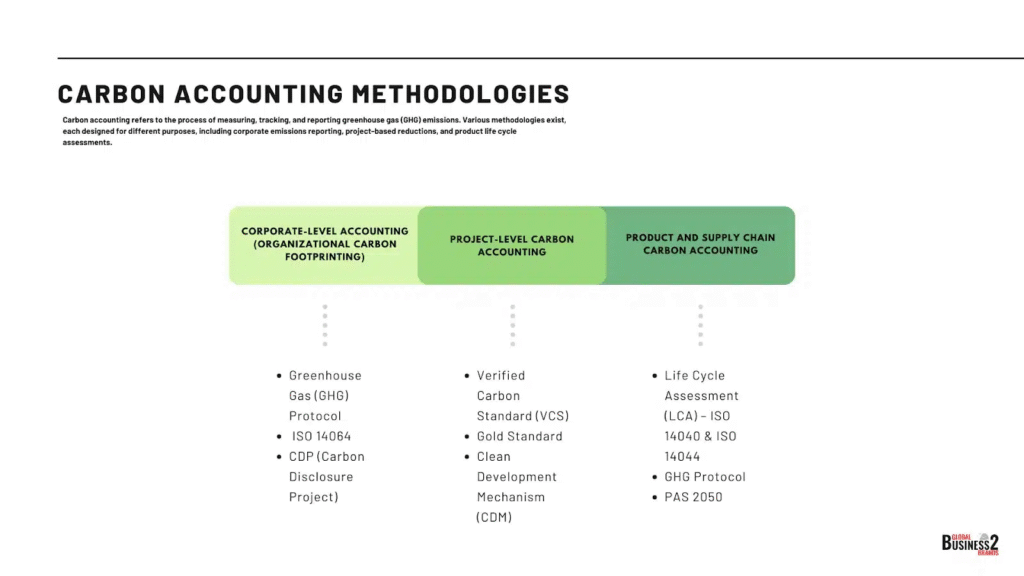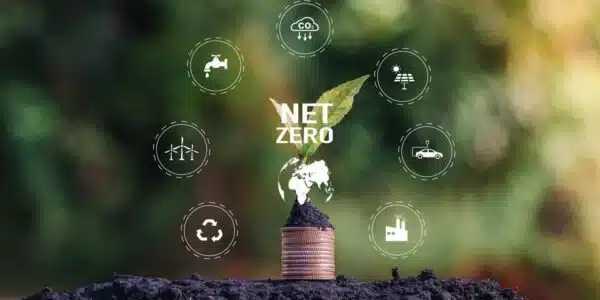
Introduction
Sustainability is no longer just a catchphrase. It is fundamentally reshaping B2B companies in the light of conscious consumerism, climate change, regulations, and financial incentives.
Green Growth has emerged as the new narrative that is shifting development paradigms. For centuries, economic development across countries has come at the expense of the environment. The trade-off is a hazardous one as it threatens human welfare and growth in the long run.
Today, technology is at the helm of this Green Growth. From clean energy sources to carbon-neutral operations, Green Tech provides cutting-edge solutions to rekindle hope for a greener tomorrow. For business leaders, entrepreneurs, sustainability officers, and innovation strategists, adopting green technologies is essential for cutting costs, meeting regulatory requirements, and achieving a competitive advantage.
In this article, we will introduce and provide a deeper understanding of the green technologies such as green data centers, carbon accounting tools, circular practices, etc., that will drive success for sustainable business in 2025. Let’s dive in!
Key Trends and Innovations
1. Sustainable Data Centers
Data centers are constantly challenged to lower their energy consumption as environmental regulations continue to evolve. These centers consume enormous energy for servers, storage, networking, etc. A report by Goldman Sachs said that on average, a single query posted on ChatGPT uses over 10 times1 as much energy to process as a Google search.
As per an industry insight by Deloitte, the demand for power will continue to surge mainly led by power-intensive generative AI (gen AI). It suggests that data centers should optimize their infrastructures and look for cleaner energy solutions.

Source Credit: Deloitte
For cooling alone, a 1 megawatt (MW) data center can use up to 25.5 million liters of water annually, which is equivalent to the daily water consumption of about 300,000 people.2 Thus, data centers which are considered the backbone of the digital economy pose significant threats to climate and the environment due to the quantum of energy and water required to sustain them.
Driven by the sustainability ethical and regulatory imperative, companies are exploring the potential of renewable energy and AI algorithms that dynamically adjust server load, cooling, and hardware usage. One key example of this is Google’s Deepmind AI which managed to reduce the energy consumption for cooling by up to 40%3.
Investing in clean energies such as wind and solar could enhance the sustainability score of B2B companies. Countries like Singapore, Netherlands, and Ireland4 are already provisioning for the growth of sustainable data centers.
A great example emerges from Sweden’s Bahnhof5 which adopted waste recycling by pumping the excessive heat dissipated in the data centers to nearby district buildings. In fact, it did monetize this opportunity by collaborating with local district authorities.
Thus, while the increased dependence on cloud computing makes energy efficiency in data processing a top priority, it also offers several gains to companies, both in the short and long run.
2. Embedding Circular Practices
Another green trend emerging on the horizon is integrating the principles of circular economy in business models and operations. Companies are closing the loop of wastage by recycling, reusing, and remanufacturing resources to minimize waste and reduce environmental impact.
Circular economy stands for industrial setup that is restorative and regenerative by design and intention. The concept is embodied in the Sustainable Development Goals 8, 9, and 12. As the importance of this transition is being recognized globally, organizations and governments are pivoting to sustainable practices.

Today, businesses are increasingly turning towards marketplaces for bulk purchases and sales of refurbished products, particularly smaller companies that lack direct access to supply chains. Adopting circular practices will help them in the achievement of their ESG goals.
3. Carbon Accounting Tools
Carbon accounting tools help organizations measure and manage their greenhouse gas emissions for effective climate action. Many companies are adopting advanced carbon tracking systems and software to monitor and reduce emissions. Data bears testimony to the uptick in the adoption of carbon accounting software. There are various methodologies that exist, each designed for different purposes, including corporate emissions reporting, project-based reductions, and product life cycle assessments.

In light of its growing market share, it is imperative to know why this software is gaining popularity:
- The increased thrust from governments globally for net zero emissions is propelling businesses to integrate these tools into their operations.
- Stakeholders, be it consumers, employees, and investors are increasingly demanding transparency and action on climate change, pushing companies to demonstrate their commitment to sustainability.
- Another reason for its growing importance is cost advantage. Yes, companies that have robust carbon accounting systems can identify opportunities for efficiency improvements, reduce costs, and attract environmentally conscious customers.
- Lastly, this software helps them manage risk by enhancing their understanding of carbon emissions and climate-related risks.
Carbon accounting software helps businesses to comply with government regulations around net zero emissions. The tools enable them to measure, track, and report emissions data accurately. Additionally, they help in scenario planning (allowing companies to model different emission reduction scenarios and assess their potential impact) and integration with other systems such as ERP and supply chain management software.
Some trends expected to pick up with carbon accounting are:
- Increased automation of carbon accounting tools.
- Improved scope 3 accounting
- Integrating with financial systems
- Helping businesses identify and implement emission reduction opportunities.
Thus, Carbon Accounting tools can help businesses stay legally compliant, improve their brand equity, and reduce inefficiency.
4. Sustainable Transportation and Logistics
Embracing sustainable transportation and logistics can help businesses reduce their environmental footprint. Moreover, it can elevate efficiency and resilience in the transportation and logistics operations. Key trends that are shaping sustainable transportation and logistics are:
- Adoption of Sustainable Aviation Fuel: Today, top logistics companies are investing in sustainable aviation fuels to reduce their carbon footprint. DHL is a great example here. It has announced plans to buy 7,200 kiloliters6 of domestically produced SAF each year from Japan’s Cosmo Energy Holdings, beginning in April 2025. Moreover, DHL aims to increase its SAF usage to 30% by 2030.
- Route Optimization: Transportation and logistics companies are implementing advanced route planning tools to reduce fuel consumption and emissions by identifying the most efficient delivery paths. This approach not only lowers environmental impact but also decreases operational costs.
- Electrification of Fleets: Switching to green modes for transportation and deliveries significantly reduces greenhouse gas emissions. Companies like Amazon7 are investing in electric heavy goods vehicles to decarbonize their logistics operations.
Apart from the above, green procurement policies, sustainable packaging and waste reduction, and other green technological trends will reshape B2B operations in 2025 and beyond.
5. AI Integration in Energy Management
Artificial intelligence is increasingly utilized to optimize energy consumption across various sectors. AI-driven systems can predict energy demand, manage distribution efficiently, and reduce waste, helping to create more sustainable energy infrastructures.
Companies such as Shell8 are already trailblazing the AI integration sphere in energy management. It is harnessing the potential of AI, to identify biofuel deposits, optimize the locations of EV charging stations, and speed up their research into clean energy solutions.
6. Green Financing a Catalyst
Although technology and finance may appear to be distinct fields, they are getting increasingly entwined in the context of sustainability. Here’s why green finance is considered a green tech trend:
Green finance helps to create a sustainable ecosystem. It connects investors with companies that are committed to sustainability. This encourages cooperation and information exchange9, which results in the creation of greener technology and solutions that work better.
Green financing be it green bonds, sustainability-linked loans, and ESG investments, all channel funds towards the development and deployment of green technologies. Studies done on how green finance drives sustainability and promotes businesses’ green technology innovation testify that green finance is an integral part of the green tech landscape.
Sustainability in Action
Given the pace of environmental degradation and the looming threat of climate crisis, integrating green technologies is an ethical imperative. But beyond this imperative, it is a strategic investment for B2B companies ensuring their long-term success. Businesses that will proactively adopt green technologies such as renewable energy systems, circular economy practices, and AI-driven efficiency tools will gain a competitive advantage. Additionally, the integration of green tech will help them to reduce costs, enhance operational resilience, and meet increasing regulatory and stakeholder demands. Companies must collaborate with sustainable vendors who share their commitment to eco-friendly practices. As someone aiming to be a B2B pioneer in 2025 and beyond, you must invest in renewable energy sources to achieve net zero and capitalize on long-term cost savings. Embrace these green tech trends today, and establish your business as a frontrunner in creating a future where sustainability fuels profit and a positive impact on the world.
Synopsis: Learnings and Roadmap
Key Learnings
| Strategic Investment in Sustainability: Integrating green technology is not only the right thing to do but also a smart business move, leading to cost savings, increased resilience, and adherence to regulations. |
| Competitive Advantage: Early adoption of sustainable practices positions businesses ahead of competitors, appealing to environmentally conscious consumers and stakeholders. |
| Regulatory Compliance: Taking proactive steps to implement carbon accounting and reporting tools helps organizations comply with strict environmental regulations, reducing the risk of legal and financial issues. |
Action Agenda
| Invest in renewable energy to attain net-zero emissions and capitalize on long term cost savings. |
| Forge partnerships with stakeholders committed to sustainability, including suppliers, customers, and industry peers, to enhance collective impact. |
| Design and implement a comprehensive sustainability strategy encompassing efforts such as AI-driven energy optimization, closed loop economy, and advanced carbon accounting methods. |
| Invest in innovation and research to explore cutting-edge green technologies, ensuring they meet upcoming regulatory standards and market needs. |
References
- https://www.cnbctv18.com/technology/chatgpt-uses-10-times-more-power-than-google-searches-says-goldman-sachs-19435551.htm
- https://www.weforum.org/stories/2024/11/circular-water-solutions-sustainable-data-centres/
- https://deepmind.google/discover/blog/deepmind-ai-reduces-google-data-centre-cooling-bill-by-40/
- https://www.us.jll.com/en/trends-and-insights/cities/how-government-initiatives-are-impacting-data-centers
- https://www.datacenterknowledge.com/servers/servers-as-radiators-can-a-data-center-heat-stockholm-
- https://www.reuters.com/sustainability/climate-energy/dhl-express-buy-sustainable-aviation-fuel-japans-cosmo-starting-april-2025-01-28/
- https://sustainabilitymag.com/articles/amazon-expands-ev-fleet-for-zero-emission-deliveries
- https://www.forbes.com/sites/bernardmarr/2024/12/20/the-future-of-energy-how-shell-is-harnessing-ai-to-transform-the-energy-sector/
- https://www.oecd.org/en/topics/finance-and-investment-for-greening-smes.html

Neha
Neha is a seasoned professional who blends academic rigor with hands-on experience in content strategy and corporate communications. With a career spanning startups, NGOs, and multinational banks, she brings a deep understanding of sustainability challenges across industries. A passionate advocate for environmental justice, Neha has actively contributed to impactful campaigns, driving awareness and action on critical environmental issues.
As an academician, she specializes in economics, financial services, banking, insurance, and management principles—providing her with a strong analytical foundation to decode complex ESG trends for businesses. Through her writing, Neha delivers insightful, data-driven perspectives that help B2B audiences navigate the evolving sustainability landscape with clarity and confidence.

